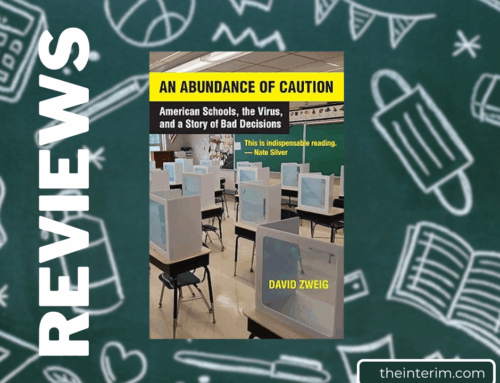 HBO’s miniseries Chernobyl arrived for streaming at a crucial moment for the company, just as the hangover from the end of Game of Throneswas starting to ebb. They needed a hit, and they got it with a five-hour story about the 1986 explosion at a nuclear power plant in the Soviet Ukraine.
HBO’s miniseries Chernobyl arrived for streaming at a crucial moment for the company, just as the hangover from the end of Game of Throneswas starting to ebb. They needed a hit, and they got it with a five-hour story about the 1986 explosion at a nuclear power plant in the Soviet Ukraine.
“Chernobyl is a thorough historical analysis,” wrote Sophie Gilbert in The Atlantic, “a gruesome disaster epic replete with oozing blisters and the ominous rattle of Geiger counters, and a mostly riveting drama.”
“The series is more than enough reason to keep your HBO subscription following the end of record-breaking hit Game of Thrones,”enthused CNet.
“Man, Chernobylis one of those periodic booster shots that inoculate us from the morbid self-loathing that accompanies a career in television. What fine, careful work from HBO and all who labored on it,” tweeted David Simon, creator of The Wire, the hit series that helped make HBO’s reputation a decade ago.
Despite a backlash of stories picking holes in the show’s historical accuracy, the buzz about Chernobylwas so overwhelming that Russia, still apparently unconvinced that the Cold War was over, announced that it was producing its own response to the show, alleging American sabotage behind the disaster.
And because there’s no proof of popularity like illogical mania, the weeks following the airing of Chernobylsaw a spike in disaster tourism to the abandoned town of Pripyat and the irradiated “exclusion zone” around the reactor.
After I recovered from the phenomenal popularity of this “feel-bad” entertainment, what actually shocked me was not the factual inaccuracies – many committed to create onscreen drama – but the articles published to get viewers up to speed on the historical basis of Chernobyl.
I realize that this shows my age. Chernobyl was one of those milestone events that punctuated the closing act of the Cold War as it played out in my first decade as an adult. (Though to be fair, I could not know that the Soviet Union and the Warsaw Pact was on its way out at the time I was living through a succession of low-paying retail jobs and small, usually roach-infested apartments.)
Even without a television, you could see the story spread from a few rumours in the A section of the paper to front page stories and somber radio reports populated by experts on both nukes and Reds. The anecdote from Chernobyl’s aftermath that sticks with me is my sister and her husband throwing out pricey cans of tinned chanterelles imported from Europe, after reading that foraged mushrooms were probably irradiated by the fallout that blew from Ukraine, across the Balkans and Poland into Germany and the Scandinavian countries. To this day, migratory reindeer herds in Norway still show high readings of radiation from living on poisoned lichen and fungus.
Nevertheless, no one in their mid-30s or younger has any living memory of Chernobyl, never mind the constant tension of the Cold War, or the slow collapse of the Soviet Union that its last leader, Mikhail Gorbachev (played in Chernobylas a feeble authoritarian running out of bluffs), cited as a principal cause of the Chernobyl disaster.
The hot take of many reviews and reactions, confronted with the basic story of Chernobyl, was “Can you believe this actually happened?” At the time, it was more than believable. Thanks to hype from incidents like Three Mile Island and movies like The China Syndrome,and the general unease surrounding anything nuclear, we’d all been primed to expect a disaster with a reactor sooner or later.
That it happened in the Soviet Union was hardly shocking. Thanks to inadequate engineering, bare minimum safety precautions, and a bureaucracy whose default response was denial, disinformation and cover-up, we got the first glimpse of how a “dirty bomb” would work in practice.
There are a lot of jaw-dropping moments in Chernobyl. There’s the scene where the apparent villain – a real-life control room supervisor named Dyatlov – belligerently insists that the reactor explosion isn’t as catastrophic as eyewitnesses have reported, right before he vomits and faints with the onset of radiation sickness.
There’s the scene where an aged local apparatchik gives a rousing speech to a roomful of plant management and party officials. The appropriate response to the nascent disaster – still only barely understood by everyone in the room – is immediate secrecy and isolation. Cut the phone lines, he says; stop the spread of disinformation and panic. It’s what Lenin would have wanted.
But the scene that still sticks with me is the one where the show’s apparent hero – Valery Legasov, a real-life nuclear scientist played by Jared Harris – has a brainstorm. Legasov is close to despair when confronted with the agonizing truth that none of the remote-control robots they can obtain will function in a radioactive wasteland of exploded fuel rods on the reactor roof – a no-man’s land that needs to be cleaned up before any further remediation work can continue.
In a flash of inspiration, he proposes that they use “bio-robots.” Like everyone else in the room with him, the viewer wonders just what sort of technological breakthrough Legasov has come up with, and why these miraculous “bio-robots” aren’t a fixture in our lives today. But the term is a euphemism: He’s proposing conscripting men, shielding them with whatever is at hand, and sending them out in 90-second shifts to shovel the radioactive debris off the roof and into the open reactor core. Once each “bio-robot” has done his brief task, he is retired from duty forever, as no one can survive more exposure than that minute and a half – at least according to their calculations. (We’re constantly reminded that most figures – often worked out onscreen on scraps of paper – are estimates at best. Nothing like this, Legasov declares, has happened, ever, in the history of the world.)
The euphemistic downgrading of men into throwaway mechanical units – and the real-time scene where we watch one of these “bio-robots” go about his brief, essential, and probably life-shortening function – is only the most absurd example of the disposability of human life fed into the hopper of the Soviet state.
Whether it actually happened or not is questionable, but the fact is that men were conscripted into this dangerous labour where no actual robot could function. And Soviet science, a handmaiden of the state like everything else there, was no stranger to euphemism, distortion and disaster.
The Chernobyl disaster happened just a generation after the end of Lysenkoism – a doctrine forced on Soviet scientists from the top down that attempted to square dialectical materialism with the scientific method, with no observable success. (Ed.: “Dialectic materialism” is a Marxist theory that political and historical events are due to a conflict of social forces caused by man’s material needs.) Named after Trofim Lysenko, its chief proponent, and supported by Stalin, it crippled Soviet scientific progress, especially in the field of agriculture and genetics, for nearly 40 years. As with any doctrine supported by Stalin, critics of Lysenko met with a bullet or the gulag.
Science, like religion, is a sphere of human interest that suffers in proximity to politics. We have the misfortune of living in a time when too many people, secularized and searching, have replaced religion with a fervent belief in science – or their perception of science, filtered through documentary films and internet memes.
There were more than a few attempts to draw parallels between the Chernobyl disaster and either Donald Trump or climate change. (Even Chernobylcreator Craig Mazin attempted the latter in a podcast series about the show.) It’s understandable: Children are being taught that the planet is in crisis mode, that their future is as tenuous as we children of the Cold War imagined ours to be in the age of overkill and nuclear winter.
The only really perceptive article I read about the show’s curious appeal came from Wiredmagazine, where writer Emily Dreyfuss described the curious relish with which viewers binge-watched a story about disaster told with huge helpings of suffering and death. (“Ahh, that feeling of impending doom, I love it,” wrote one fan on Twitter.)
Both conservatives and liberals saw their beliefs reflected in the show, which probably accounted for its immense success. “The fact that both interpretations can exist,” writes Drefuss, “points to another reason the show is so enjoyable despite being so bleak — it can be relevant if you want it to be. It’s not so on-the-nose that it can’t be escapism.”
“If you want to escape the horrors of now by revisiting the averted horrors of then, it works. If you want to understand the stakes of 2019 by looking back at the stakes of 1986, you can. If you want to be reminded of the bravery and best of humanity, uplifted by the fact that so many people on the ground in Chernobyl put their lives on the line, walking into sure death, stripping their clothes to put their bodies in the way of imminent global doom to save us all, it works.”
“If you’re just watching so you can wallow in the doom you were already feeling as you mourned the recent end of Game of Thrones, that works too.” It makes sense that a water-cooler show like Chernobylboth scares and comforts us; we are creatures conditioned by centuries of culture to revel in catharsis, like the climactic moment when the hero – like Legasov in front of his scientific peers during the trial at the finale – tells the truth no one wants to hear about the Soviet system.
Legasov’s speech never happened in real life. But we like to imagine that we’d be receptive to that truth and, armoured by it, would change the world. It’s hard to believe it when so many people demand that government should be expanded and science politicized to protect their interests and flatter their worldview. And people will believe the craziest things, even without the threat of the gulag or a bullet.




